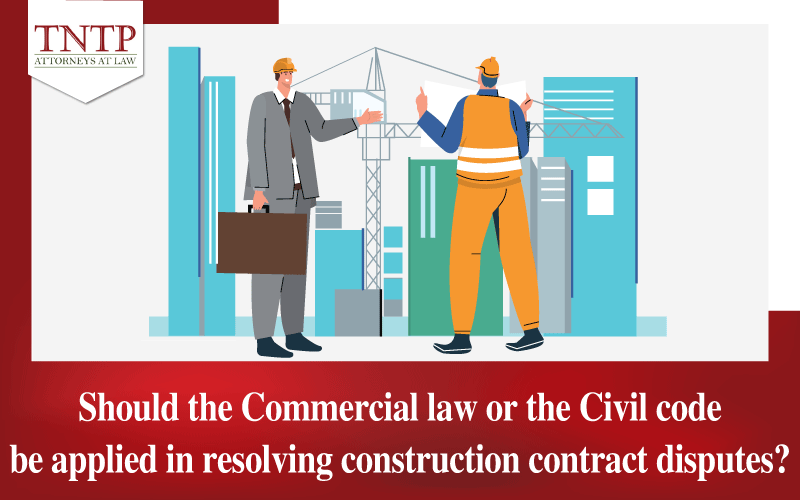Debt Collection Experience: Does Debt Recovery Litigation Always Need to Go to Trial?
All of debt collection methods, litigation stands as the final option for creditors when negotiations fail and the debtor no longer cooperate with payment. When the court serves as the dispute resolution authority, the ultimate goal of creditors is typically to proceed to trial, so the court can issue a legally binding judgment that enables enforcement. However, in certain situations, pushing for a trial may not only be ineffective for debt enforcement but also prolong the resolution process. In this article, TNTP provides insights into whether litigation for debt recovery always needs to go to trial.
1. Litigation Process
According to legal provisions, when disputes arise between parties and cannot be resolved through negotiation or mediation, they have the right to request a court or another competent authorities as prescribed by law to resolve the dispute. The resolving disputes may be specified in either the contract, mutual agreement between parties or as.
The litigation process begins when the court receives the plaintiff’s statement of claim and assigns a judge to handle the case following the procedures outlined in the Civil Procedure Code. During legal proceedings, the plaintiff is required to pay advance court fee (if applicable), provide additional documents when requested by the court, and participate in meetings, mediation sessions, and court trials as required.
A trial will take place if the parties cannot reach a settlement. The court will issue a judgment after the trial concludes. If the judgment is not appealed or protested through the appellate procedure, it will take legal effect and serve as the basis for enforcement.
2. Does Debt Recovery Litigation Always Proceed to Trial?
According to civil procedural regulations, the trial is the final stage requiring all parties’ participation before a judgment is issued. However, is proceeding to trial always the optimal solution for resolving debt-related disputes? Based on TNTP’s experience in this field, many disputes can be resolved without going to trial. Specifically:
a) Resolving the Case at the Mediation Stage
According to the Civil Procedure Code, even after filing a case in court, the parties reserve the right to mediate and negotiate before the court issues a decision to bring the case to trial. If the parties reach a mutually agreement on settling the case, the court will issue a The Decision recognizing the agreement of the involved parties (“The Decision”) in accordance with legal provisions. This decision holds the same legal value as a court judgment and takes effect immediately when issued. The Decision cannot be appealed but may only be gone under cassation procedure.
Thus, from the time a creditor files a lawsuit until the trail begins, the parties are entirely entitled to negotiate a settlement. If the creditor agrees with the debtor’s payment proposal, they may request the court to issue a The Decision to terminate the dispute resolution at the court.
b) Advantages of a The Decision Compared to the Judgment
• Legal Effective Date of The Decision and the Judgment
Compared to a first-instance judgment, The Decision takes effect more quickly. Specifically:
– A first-instance judgment takes effect 15 days after its pronouncement, assuming no appeal is filed.
– The Decision takes effect immediately upon issuance.
The effective date of a judgment or The Decision is crucial, as this is when the creditor can begin requesting enforcement against the debtor. The enforcement authority is empowered to implement legally prescribed measures for debt collection. Within 15 days of a first-instance judgment being issued, parties may file an appeal, or the People’s Procuracy may protest within 30 days, which could move the case to the appellate phase. This extends the debt recovery period and adds costs for resolving the case at appeallate stage.
• Appeal and Protest Procedures
– A first-instance judgment can be appealed within 15 days from the date of its pronouncement.
A first-instance judgment can also be protested by the same-level People’s Procuracy within 15 days, or by the direct superior People’s Procuracy within 1 month from the date of its pronouncement.
– For The Decision, after 7 days from the date of the mediation record, if neither party withdraws from the agreement, the judge presiding over the mediation or a judge assigned by the court chief justice will issue a Decision recognizing the agreement of the involved parties.
This decision takes immediate legal effect upon issuance and cannot be appealed or protested under the appellate procedure.
Thus, a first-instance judgment is more vulnerable to appeal or protest compared to a The Decision. If the parties agree to a settlement and 7 days have passed, the court will issue a decision that is immediately enforceable. Any challenge to The Decision must go through the cassation procedure, which requires sufficient legal grounds to do so. In practice, requesting cassation is complex, time-consuming, and expensive. Given these factors, parties typically hesitate to appeal the Decision through the cassation process.
From the above points, it is clear that proceeding to trial may not be the most effective approach for debt recovery. Mediation serves as an efficient and cost-effective alternative that creditors should consider when circumstances and strategy are conducive to negotiated settlements.
This article has been prepared by TNTP on the topic: “Debt Recovery Experience: Is Litigation for Debt Recovery Always Necessary to Go to Trial?”. We hope this article provides valuable insights for readers.
Best regards,



